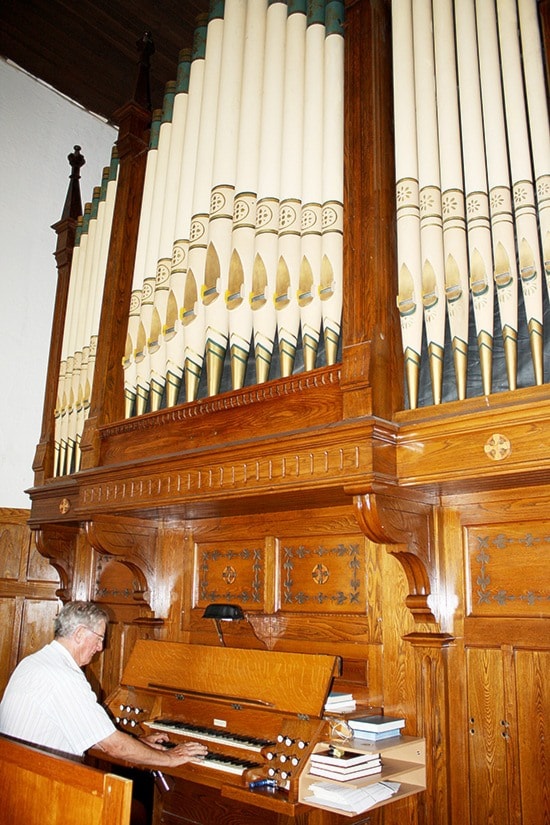While Summerlanders have spoken out about the importance of preserving a 105-year-old church building in Lowertown, its future remains uncertain.
On Monday evening, between 40 and 50 people attended a community meeting, hosted by the Summerland Museum and Heritage Society, to consider future uses of the Lakeside Presbyterian Church building and ways to preserve it.
Earlier this year, the building was put up for sale.
“Summerland has not always had a stellar record in preserving its historical buildings,” said Terry Green, treasurer of the museum and heritage society.
Sandy Nicolson, president of the society, said they have been interested in purchasing the church to preserve it.
Money in a bequest is available for a facility to house an art collection.
The society made an offer of $425,000 for the building. The offer has been accepted.
“We thought the church would be the perfect place,” she said. “We just could not arrange the financing.”
David Gregory, a director of the society, said the building has value for its location, its role in the community, its connection as the last surviving building from early Baptist activity in Summerland and its pipe organ.
Initially, it was used as a Baptist church. In 1926, it was sold to the United Church and in 1958, it became the Summerland Masonic Lodge. In 1991, it was acquired by the Presbyterian Church of Canada.
The organ, acquired in the 1920s from Trinity United Church in Port Arthur, Ont., is believed to have been constructed in the 1880s.
“Lots of people haven’t seen the inside of the church,” Gregory said. “The organ is amazing.”
The church bell was installed by the municipality in 1927, as a community bell for emergency alarms.
Gregory said a structural inspection and a building inspection were both conducted within the past two weeks.
“This is one of our community’s gems,” he said of the building.
Group discussion sessions, moderated by Barbara Thorburn, generated ideas for the use of the building as well as ways to preserve it.
“The majority of people would like to keep it as a community resource, but there are lots of obstacles,” she said.
In August, municipal council passed a resolution to establish a community heritage register, which will include the church building.
The register does not provide protection, but will have the authority to temporarily withhold a building permit or demolition permit for 60 days, in order to give the municipality time to designate a property as heritage.
If the municipality wishes to designate a heritage conservation area within the Official Community Plan, the time limit is 120 days.
Ron Rosher, a director of the museum and heritage society, said it is now up to the public to take action if the building is to be preserved.
“The museum board has done what the museum board intended to do, which was to get us to this point,” he said. “We need to have people who are interested, people who are concerned, people who are motivated to grab hold of this idea.”
